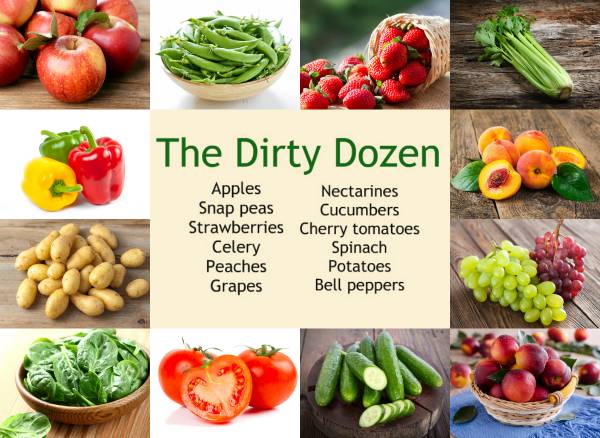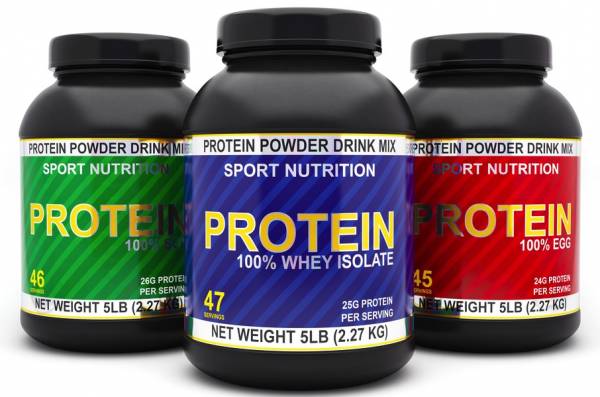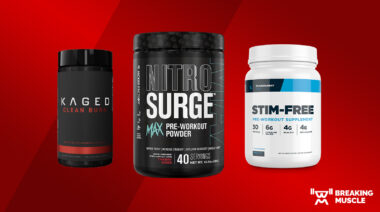When it comes to sticking to a structured nutritional plan – whether for health, physique, performance, or all of the above – the two biggest obstacles to success time and money. A diet focused around whole, natural foods can be expensive (especially for someone making a transition away from processed and convenience foods), and then you’ve got the cost of supplements.
But no matter what your school of thought in terms of diet and nutrition and no matter what your health and fitness goals are, there are always ways to save a little more of both time and money when it comes to shopping for your grocery and supplement staples.
Groceries
No one wants to feel like they’re at the grocery store every day of the week, so take the time to figure out exactly how much of each item you need to get you through your meal plan for a few days. Schedule two shopping trips three or four days apart each week, and calculate how much you need to purchase at one time in order to last you through to your next shopping day. This will help you to avoid wasting time with one-item stops at the end of every day.
“It might take a little bit more planning and organization at first, but in the long run using these strategies is going to save you time and money – and give you even greater returns in the form of conquering your health and fitness goals.”
Also considering buying what you can in bulk amounts – frozen meats and veggies, canned good, dried goods, etc. This will cut down on the time each trip takes since you’ll only have to grab a few necessity items. It will also save you money.
There are some food swaps you can make to stretch a buck, as well. Here are some of my favorites:
- Frozen vs. “Fresh” Fish: This will vary depending on where you’re located, but many groceries selling “fresh” fish are actually selling fish that has been frozen and thawed. Check the label to see if it has been “previously frozen.” Don’t pay more just to have it already defrosted!
- Frozen vs. Fresh Fruits and Vegetables: Buying frozen can be a money saver for items that aren’t in season, plus it’s often better quality than paying extra for foods that aren’t in season. Think about it – fruit sand veggies picked and immediately frozen or fruits and veggies that had to travel a few days before even reaching the shelves? Spinach is a great frozen option if you plan to cook it down anyway. Think about how many bags of fresh spinach it takes just to get one cup of cooked. You can pay just a few dollars for five times as much frozen spinach, and it saves you cooking time, too.
- Protein vs. Protein: Get more protein per gram of protein to make the most of your budget. If turkey breast is cheaper than chicken breast, then opt for turkey to get a few extra grams of protein per ounce. Consider the same when it comes to seafood. Shrimp, scallops, tilapia, and tuna are great lean protein options, but make sure you actually compare the price per gram of protein.
- Beans and Rice vs. Beans and Rice: Don’t pay extra for the convenience of canned beans and instant rice. Buy dried beans and soak them yourself and buy rice in bulk. The few extra minutes won’t kill you.
- Fresh vs. Frozen Protein: Sometimes it’s actually cheaper to buy fresh. When it comes to chicken breast, I only purchase fresh as most frozen varieties are loaded with soy, sodium, and water. When I find a good deal on fresh chicken, I stock up and freeze it myself. This way it ends up being even cheaper than the regular frozen options.
- Organic vs. Conventional: A quick search for the Dirty Dozen and Clean 15 of fresh produce can shed light onto what items are worth spending the extra for and those that aren’t. But a simple rule is if you’re not going to eat the skin or you can peel off outer layers, then don’t waste the money. (Unless you were planning on eating that banana peel?)

Another time saver is to choose a grocery store that’s conveniently located on the way to and from somewhere you already go, like work or the gym. By keeping cooler bags in your car or purchasing them at the register (most grocery stores have insulated bags for sale for a few dollars), you can pick up the necessities and even leave them in the car while you do your workout. Plus, this helps you avoid paying for the regular bags at the register.
“There are a ton of free phone apps that make this easy, and many combine digital flyers, coupons, and cash-back programs to save you money, too.”
Take a list with you to avoid getting distracted browsing, and mark things off to ensure you don’t have to come back between scheduled trips for a forgotten item. There are a ton of free phone apps that make this easy, and many combine digital flyers, coupons, and cash-back programs to save you money, too. You can combine these with the free loyalty cards most stores offer as well as air miles from your credit card to make the most of every purchase.
- Snap by Groupon: Over twenty products featured weekly that you can get cash back on just by uploading your receipt. Once you reach twenty dollars, you get a check! Perfect for you’re your staple items are on sale. This week I made $4.50 by stocking up on K-cups that were already on sale. (Plus, they had an air miles bonus. Score!)
- Checkout 51: Similar to above, but with more weekly items and chances to win cash for spending over $60 on groceries anywhere. Even if no featured items are on your list, you can still win cash!
- Flipp: Combines flyers, coupons, and grocery lists. Let’s be honest, no one feels like a badass pulling out a coupon at the register, but with this app you can tap on a coupon and it saves a digital version for you so you just have to show your phone. For all anyone else knows you’re showing off your newest gym pic!
Supplements
When it comes to supplements consider what you really need. One of the benefits of a balanced whole food diet is that you shouldn’t need many supplements as you’re getting the proper micronutrients from your food.
“For performance supplements like creatine, branched chain amino acids (BCAAs), and protein powders, don’t pay extra just to have variety.”
When it comes to things like multi-vitamins and omegas, stock up at your grocery store when they’re on sale as opposed to going to a health or supplement store. Most branded vitamins include the same ingredients and quantities as the grocery store brands – so don’t pay extra for the packaging!

For performance supplements like creatine, branched chain amino acids (BCAAs), and protein powders, don’t pay extra just to have variety. BCAAs and protein are expensive, so if you’re on a budget opting for a neutral flavor and adding flavor yourself can provide cheaper options. For BCAAs, creatine, and glutamine, just add your favorite water flavouring. For protein powders, start with a vanilla base and add zero-calorie syrups, cocoa powder, or flavor extracts. This way you can buy the larger size in one flavor to save money without risking getting sick of a flavor.
“If you purchase your supplements online, look for “samples” and “gifts” that many companies will include for free with your purchase, as well as any discount or promotional codes.”
Check with your favorite supplement stores and brands to see if they offer any loyalty or ambassador programs, as well as potential sponsorships if you are able to offer the company something in return. An ambassador program is a great option for beginner athletes who are loyal to a certain brand. If you find you’re always using the same products, why not let the company know and receive a discount for your purchases? It’s not about getting handouts, but what you can do for the company and what they can do for you. So before contacting a company make sure you consider what assets you bring to the relationship – it’s a two-way street.
If you purchase your supplements online, look for “samples” and “gifts” that many companies will include for free with your purchase, as well as any discount or promotional codes. Many companies have sponsored athletes and ambassadors who offer promo codes on their social media pages, so it’s worth a quick search before finalizing your purchase.
It All Adds Up
It might take a little bit more planning and organization at first, but in the long run using these strategies is going to save you time and money – and give you even greater returns in the form of conquering your health and fitness goals.
A few cents here and there can add up quickly when you’re eating for physique and/or function. By implementing small tips and tricks like these, you can save time and money without compromising your goals.
More Like This:
- 5 Steps to Easy Weekly Meal Preparation
- Clean Eating Challenge: 2 Weeks to a Tighter Trunk
- Modern Day Meal Planning: Eating to Promote Fat-Burning
- New on Pulse Beat Fit Today
Photos courtesy of Shutterstock.






